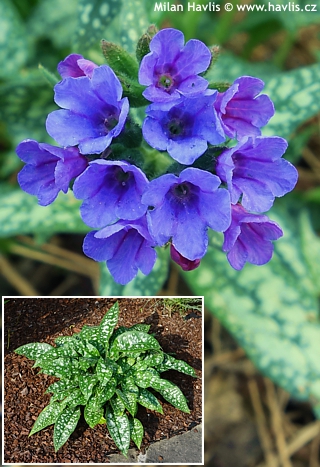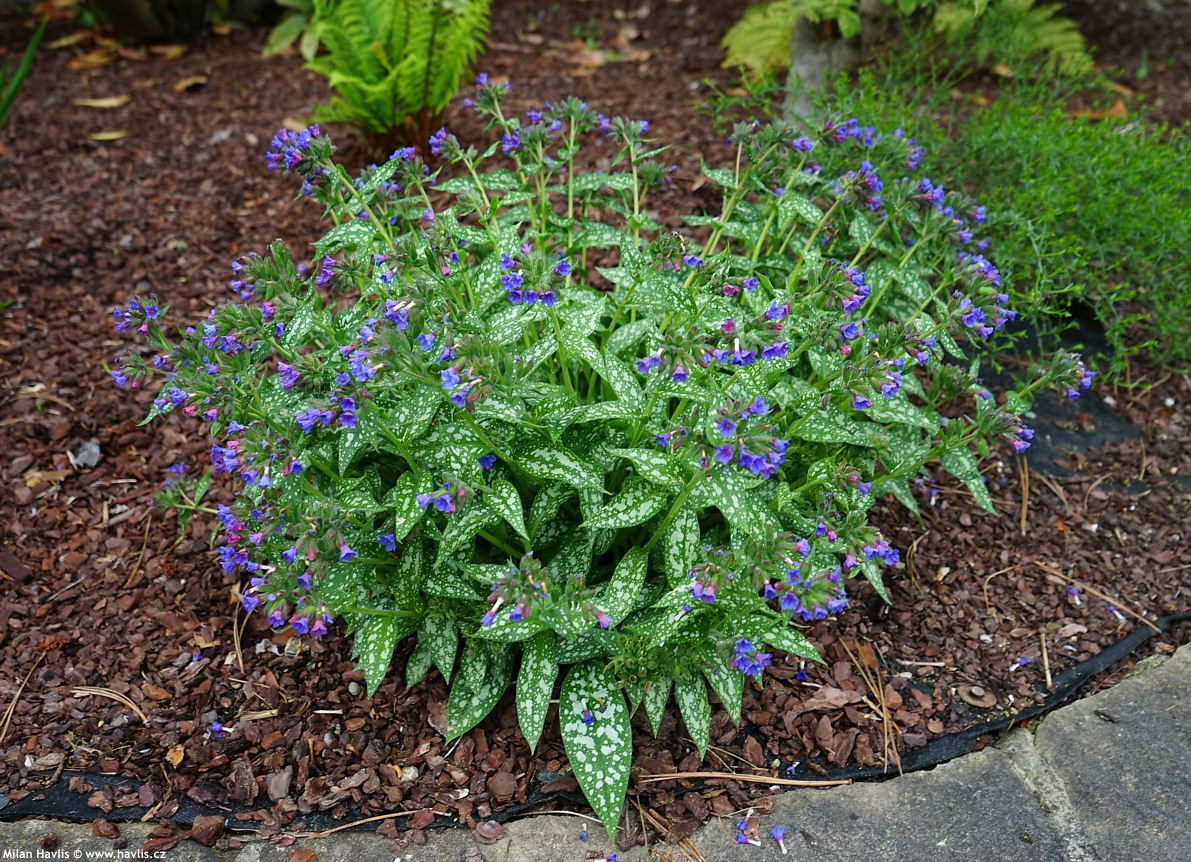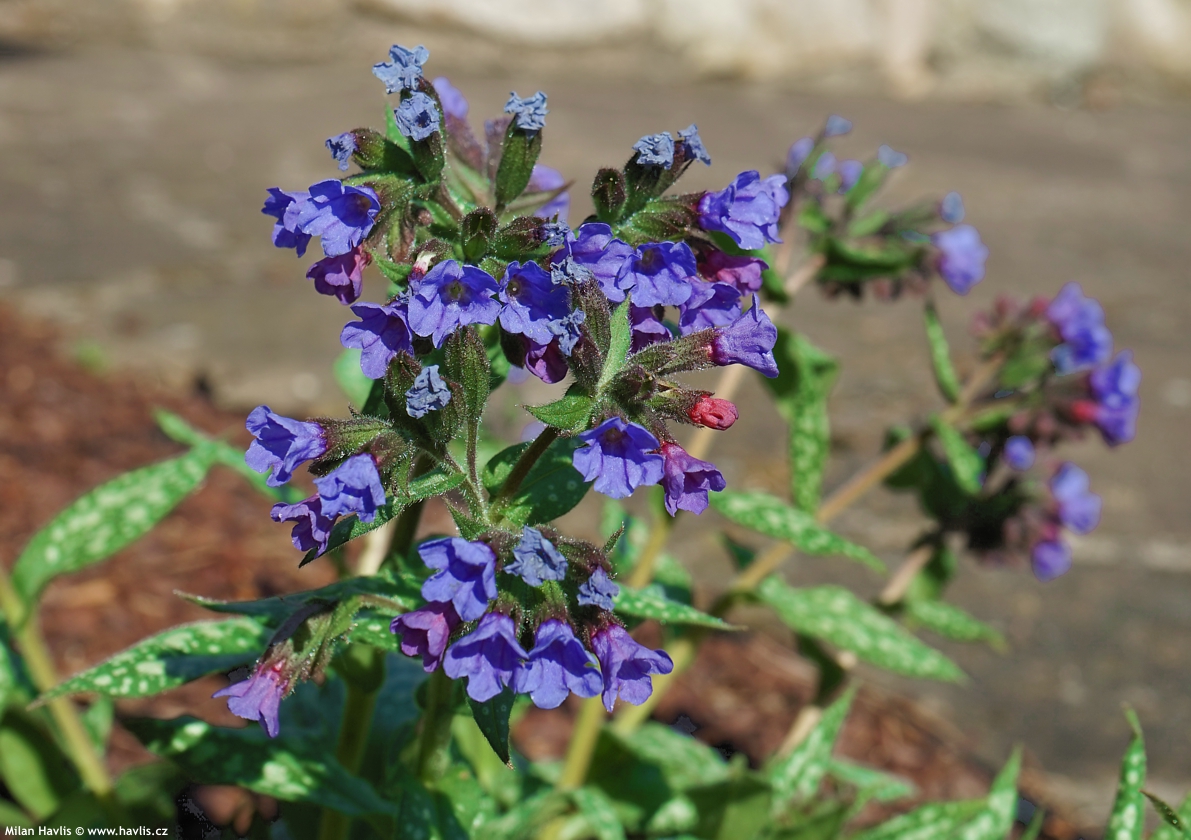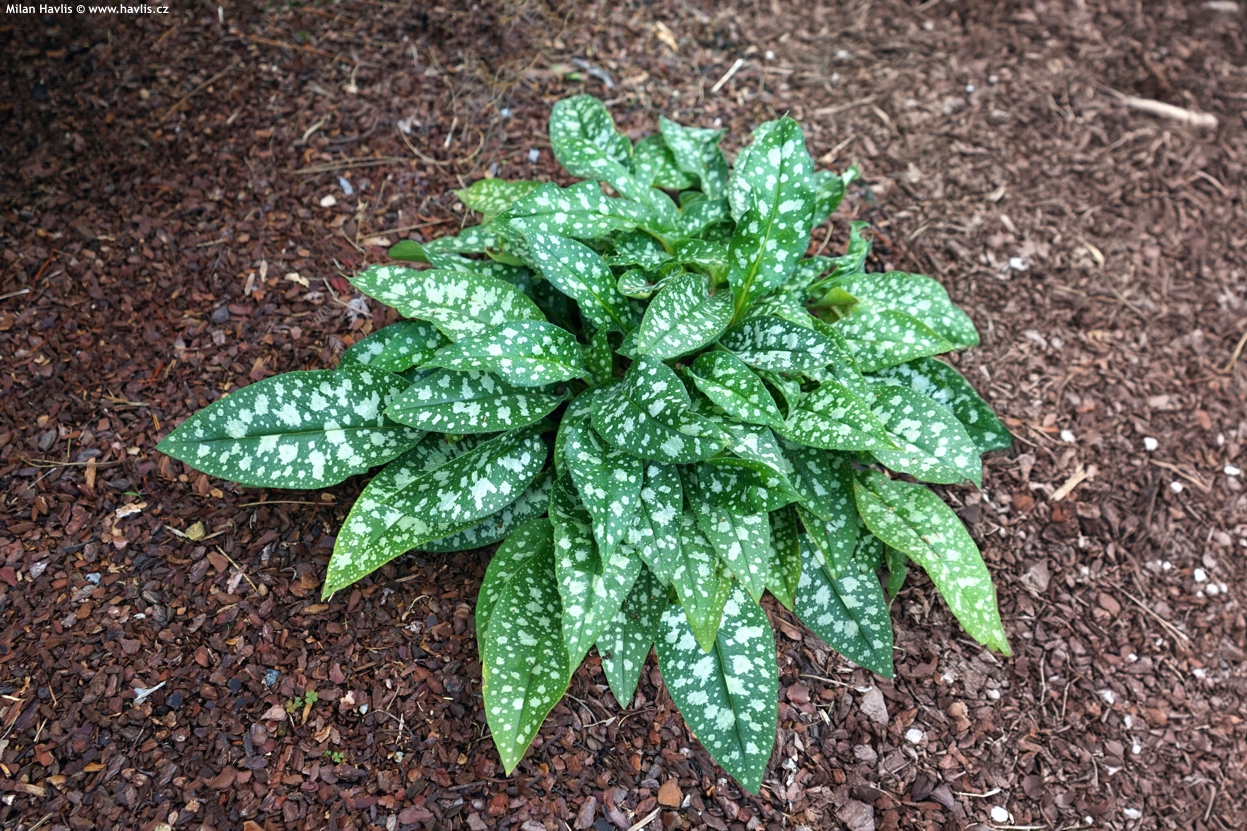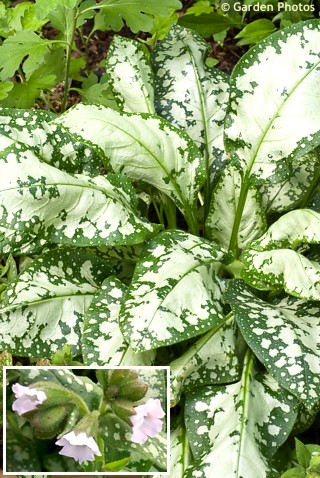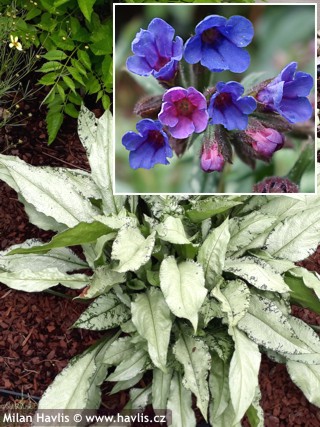Pulmonaria 'TREVI FOUNTAIN' lungwort
size/type
low or groundcovering,low perennial
usual height
0,2-0,3m
usual width
0,3-0,5m
leaves
semi-deciduous broadleaf
colour of leaves
flowers
showy
colour of flowers
blooming time
April
location
semi-shade to shade
soil type
any (acidic to alkaline)
soil moisture requirements
evenly moist (dislikes drought)
USDA zone (lowest)
4 (down to -34°C)
winter protection
for zone 5+6

for zone 7

categorized
Pulmonaria
Lungwort is a genus of about 16 perennial species originally found in woodlands and at streamsides in Europe and Asia, and for centuries has been used as a medicinal plant. Plants are characterized by pink and blue flowers, and many of them make large, very attractive, almost exotic looking leaves.The Trevi Fountain is one of the prime sculptures of late Italian Baroque. Designed by architect Nicola Salvi for Rome's Piazza di Trevi (The Square of Three Ways), it was completed in 1762. It is an impressive monument whose beauty attracts attention ever since its installation, and it is no wonder that its name has been used in other fields such as botany: this unique lungwort can fully match its charm. Just imagine that the leaves are the water surface and the spots are the shattering waterdrops constantly landing on it.
Description of the plant:
Trevi Fountain lungwort has many features for which it has become so beloved. In spring, usually from early April in CE climate, rise 20-30 cm tall, fleshy stems topped by rich trusses of small, fuchsia-pink flowers which soon turn cobalt-blue. The presence of both the colors in full bloom is typical for lungwort but here blue colour dominates in full bloom. Trevi Fountain is supposed to bloom longest of all fancy-leaved varieties.During flowering, appear broadly elliptic to oval, light green, hairy leaves with silvery grey spots. After flowering, their colour darkens and the leaf increases its size almost tree times and so do the spots, and it slightly changes its shape to broadly lanceolate. You can enhance the foliage quality by hard pruning the plant immediately after flowering back to the ground. Newly emerging leaves will be prettier and will remain evergreen during mild winters. They do not suffer from powdery mildew so you can enjoy their rainforest look almost all year round.
Lungwort, especially its large-leaved forms need equally moist, fertile soil that does not dry out, or is waterlogged. It needs partial or complete shade, it is an ideal understory of tall trees providing only filtered sunlight. Use it in mixed beds with hostas or liriope. Eve if the leaves look alright after winter remove all of them in early spring. Hardy to min. -34°C (USDA zone 4).
Last update 27-03-2022
QUICK PRICE OVERVIEW
CURRENTLY SOLD OUT












